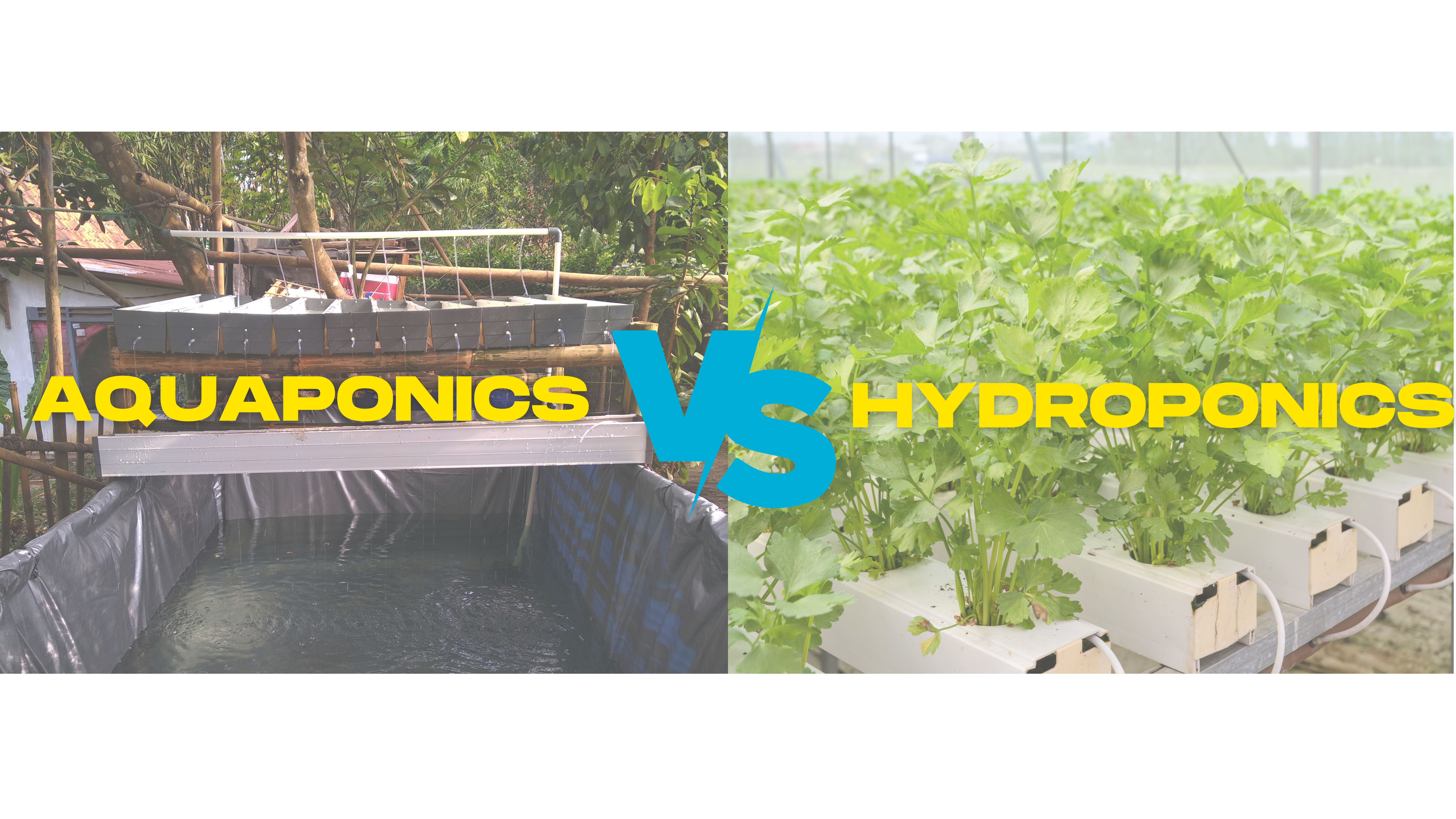
As the demand for sustainable agricultural practices continues to grow, innovative farming methods that minimize environmental impact while maximizing efficiency have gained attention. Two such methods, aquaponics and hydroponics, have emerged as promising regenerative agriculture solutions. Both systems offer unique benefits and contribute to the advancement of sustainable food production.
Hydroponics is a soilless farming technique that cultivates plants directly in nutrient-rich water, while aquaponics utilizes a closed-loop system that integrates fish farming with hydroponics. In this article, we will dive deeper into the distinctive features of aquaponics and hydroponics, highlighting their differences and advantages.
What Is Aquaponics?
Aquaponics is a closed-loop system that integrates aquaculture (fish farming) with growing plants in water, not soil. It creates a symbiotic relationship where fish waste provides natural nutrients for plants, and in turn, the plants purify the water for the fish.
How Aquaponics Works
In an aquaponics setup, fish are reared in a tank, and as they produce waste, ammonia and other nutrients accumulate in the water. This nutrient-rich water is then conveyed to grow beds where plants, such as herbs, leafy greens, and vegetables, are cultivated in water. The plants, with the help of beneficial bacteria, filter and convert the ammonia into nitrates, which serve as vital nutrients for their growth. The cleansed water is then recirculated back to the fish tank, completing the closed-loop cycle.
Advantages of Aquaponics
There are a few major advantages of aquaponics for agriculture, including:
- Natural Nutrient Sourcing: Aquaponics utilizes natural waste produced by fish, eliminating the need for synthetic fertilizers. This makes it an eco-friendly and regenerative farming method.
- Water Efficiency: Aquaponics uses significantly less water compared to traditional soil-based farming. The closed-loop system recirculates water, minimizing water wastage.
- Reduced Environmental Impact: The symbiotic relationship between fish and plants promotes water conservation and minimizes the release of harmful pollutants into the environment.
Challenges of Aquaponics
Challenges of aquaponics include:
- System Complexity: Setting up and maintaining an aquaponics system can be challenging for beginners. Proper knowledge of fish care, water quality, and plant cultivation is essential for success.
- Fish Health Management: Maintaining a healthy fish population is crucial for nutrient-rich water. Fish diseases or overcrowding can impact the overall system.
What Is Hydroponics?
Hydroponics is a soilless farming technique that involves cultivating plants in nutrient-rich water instead of traditional soil. It provides plants with direct access to essential nutrients, promoting efficient growth.
How Hydroponics Works
In hydroponics, plants are placed in an inert growing medium, such as perlite, rockwool, or clay pellets, which supports the root system. The plant roots are submerged in or constantly exposed to nutrient-rich water solutions, ensuring they receive all the necessary minerals for optimal growth. Oxygen is also supplied to the roots to prevent rot and promote healthy development.
Advantages of Hydroponics
Advantages of using hydroponics for agriculture include:
- Controlled Nutrient Delivery: Hydroponics allows precise control over nutrient levels, tailoring them to suit specific plant needs. This precision promotes faster growth and higher yields.
- Space Efficiency: Hydroponic systems require less space compared to traditional soil farming, making them suitable for urban or indoor cultivation. This reduced need for space also helps reduce the large amounts of land traditional agriculture needs, thus helping reduce deforestation and other climate change drivers related to traditional farming.
- Weed and Pest Reduction: Soilless cultivation minimizes the risk of weeds and soil-borne pests, reducing the need for pesticides.
Challenges of Hydroponics
Challenges of hydroponic production include:
- Nutrient Imbalances: Incorrect nutrient balances can lead to plant nutrient deficiencies or toxicities, so hydroponics requires careful monitoring and adjustment.
- Power Dependency: Hydroponic systems rely on electricity to maintain water circulation and provide supplemental lighting, leading to increased energy consumption.
Aquaponics vs. Hydroponics: A Comparative Analysis
In this section, we’ll break down some of the main differentiating factors between aquaponics and hydroponics.
Nutrient Sources: In aquaponics, fish waste provides the natural nutrient source for plants, eliminating the need for synthetic fertilizers. In contrast, hydroponics relies on nutrient solutions that require careful management to maintain the correct balance.
System Complexity: Aquaponics tends to be more complex due to the integration of fish rearing and plant cultivation. Hydroponics is generally easier to set up and manage, making it suitable for beginners.
Environmental Impact: Both systems contribute to sustainable agriculture by reducing water usage and minimizing the need for chemical inputs. However, aquaponics stands out with its closed-loop ecosystem, which further reduces environmental impact.
Water Usage: Aquaponics is water-efficient due to its closed-loop water recirculation. Hydroponics still uses less water than traditional soil farming but may require more compared to aquaponics.
Crop Variety and Growth: Both methods support a wide variety of crops, but hydroponics may have a slight advantage in providing more controlled nutrient delivery, leading to potentially faster and larger yields.
Maintenance and Cost: Aquaponics may require a more significant initial investment and ongoing maintenance due to fish care, while hydroponics tends to be more cost-effective and easier to maintain.
Aquaponics vs. Hydroponics: Which System Is Best?
Choosing between aquaponics and hydroponics depends on various factors, such as the farmer’s level of experience, available space, and specific farming goals.
When considering sustainability and fighting climate change, both aquaponics and hydroponics offer distinct advantages. Aquaponics stands out as a more regenerative option, as it creates a closed-loop ecosystem that relies on natural nutrient cycling, reducing the need for external inputs and minimizing environmental impact. By combining fish farming and hydroponics, aquaponics efficiently uses resources, enhances soil health, and sequesters carbon through plant growth. On the other hand, hydroponics is also a sustainable choice, especially in urban settings with limited space, as it uses less water and allows for precise nutrient control.
Ultimately, the best approach depends on the specific context and resources available, but both systems contribute significantly to sustainable agriculture and combating climate change.